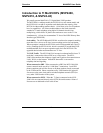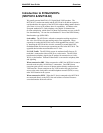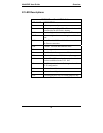
MultiVOIP User Guide Overview
19
Introduction to EI MultiVOIPs
(MVP3010 & MVP30-60)
We proudly present MultiTech’s E1 Digital Multi-VOIP products. The
MVP3010 is a rack-mount model and the MVP30-60 is an add-on expansion
card that doubles the capacity of the MVP3010 without adding another chassis.
All of these voice-over-IP products have fax capabilities. All adhere to the
European standard of E1 trunk telephony using digital 30-channel time-
division multiplexing, which allows 30 phone conversations to occur on the E1
line simultaneously. All can also accommodate E1 lines of the ISDN Primary
Rate Interface type (ISDN-PRI).
Scale-ability. The MVP3010 is tailored to companies needing more than a
few voice-over-IP lines, but not needing carrier-class equipment. When
expansion is needed, the MVP3010 can be field-upgraded into a dual E1 unit
by installing the MVP30-60 kit, which is essentially a second MultiVOIP
motherboard that fits into an open expansion-card slot in the MVP3010. The
upgraded dual unit then accommodates two E1 lines.
E1 VOIP Traffic. The MVP3010 accepts its outbound traffic from an E1
trunk that’s connected to either a PBX or to a telco/carrier. The MVP3010
transforms the telephony signals into IP packets for transmission on LANs,
WANs, or the Internet. Inbound IP data traffic is converted to telephony data
and signaling.
When connected to PBX. When connected to a PBX, the MVP3010 creates a
network node served by 10/100-Base T connections. Local PBX phone
extensions gain toll-free access to all phone stations directly connected to the
VOIP network. Phone extensions at any VOIP location also gain local-rate
access to the entire local public-switched telephone network (PSTN) at every
other VOIP location in the system.
When connected to PSTN. When the E1 line(s) connected to the MVP3010
are connected directly to the PSTN, the unit becomes a Point-of-Presence
server dedicated to local calls off-net.


















